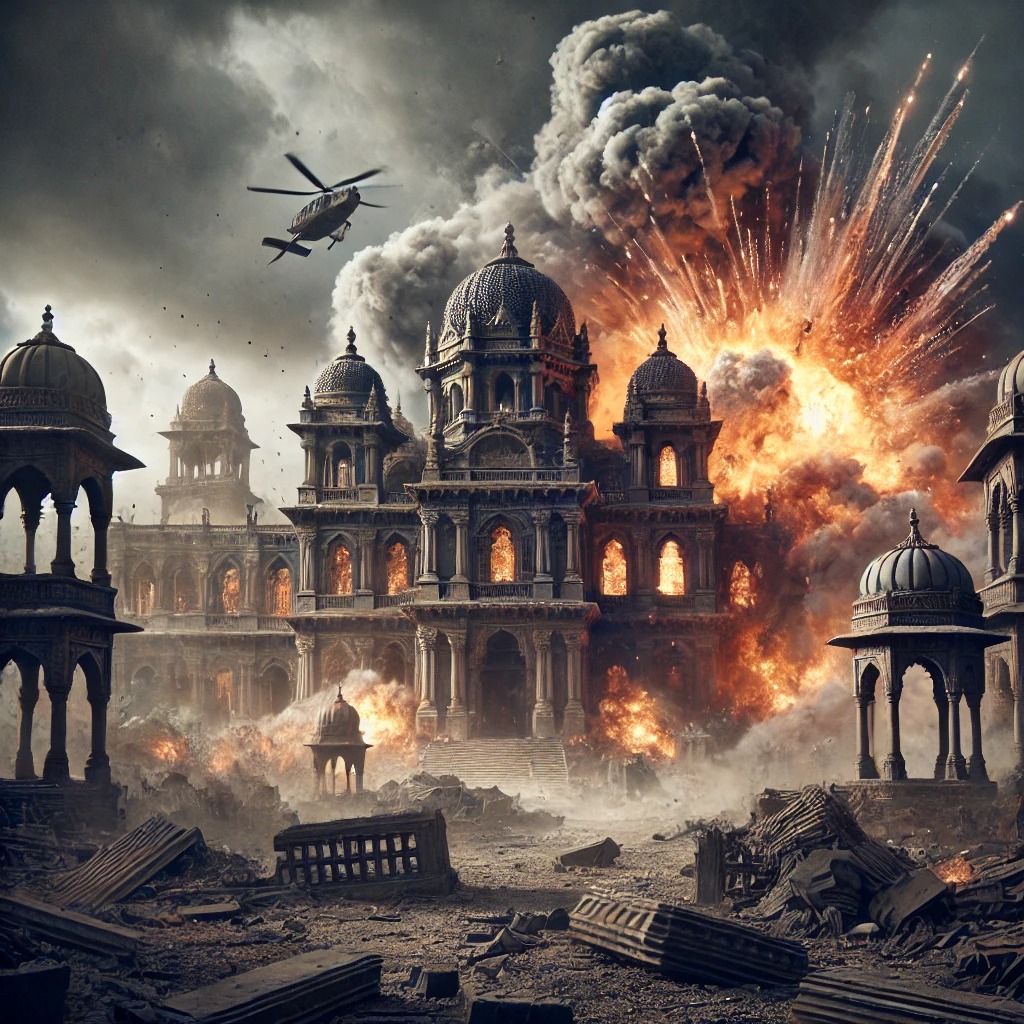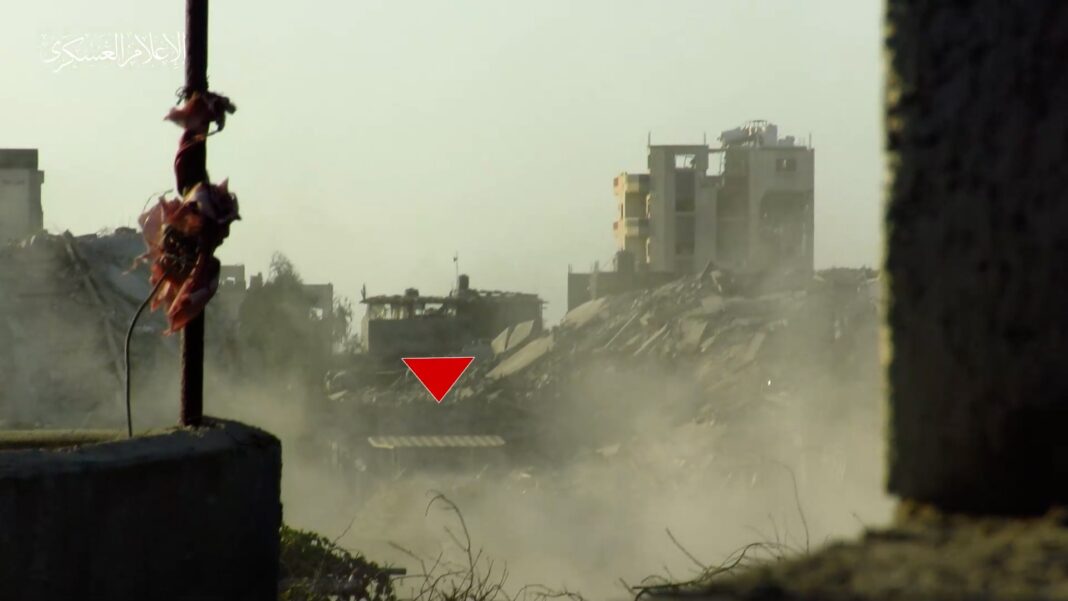The preservation of cultural heritage sites represents a bridge to our collective past, holding within them the stories and identities of civilizations. Yet, in recent months, numerous UNESCO World Heritage Sites in the Middle East have faced destruction and degradation due to Israeli military actions, raising international concern about the safeguarding of global cultural heritage.
Incidents in Gaza
Raja Shehadeh, a Palestinian lawyer and writer, reflects on the cultural devastation: “It might already be too late to save the homes where many of the people of Gaza have been living and have memories of lives spent there. Or the recollections of people in Ramallah who spent their honeymoons in Gaza by the Mediterranean. Like many others, I too have strong and beautiful experiences of time spent in Gaza.”
Since October 7, 2023, over 250 sites of historical importance have been destroyed or severely damaged in Israeli air raids on Gaza, according to updated reports by UNESCO and cultural preservation NGOs. The impact has been devastating for the region’s cultural identity and its tangible links to the past. Among the most prominent cases:
The Great Omari Mosque: Thought to be Gaza’s oldest mosque, this site was further damaged in renewed airstrikes in March 2024. Once home to a library with rare manuscripts, the remaining portions of the mosque are now in danger of collapse.
Anthedon Harbour: Gaza’s first known seaport, dating back to 800 BC and listed on UNESCO’s Tentative World Heritage list, has been completely erased. Satellite imagery confirms that no trace remains of the ancient harbor that once linked Gaza to Mediterranean trade networks.
Saint Porphyrius Church: After suffering significant damage in an October 2023 strike, the Greek Orthodox site was subjected to further bombardment in December 2024, leading to the destruction of its remaining structural integrity. The church’s congregation has since been forced to relocate.
The Monastery of Saint Hilarion: Previously listed as heavily damaged, new reports confirm that Israeli shelling has obliterated large portions of the 4th-century monastery.
The Rashad El Shawa Cultural Center: Once a vibrant hub for cultural dialogue and artistic performances, its complete destruction has left Gaza without one of its most important cultural institutions.
Threats to Lebanon’s Heritage
The destruction has not been limited to Gaza. In Lebanon, airstrikes have come dangerously close to UNESCO-listed sites, and damage has intensified in recent months.
Baalbek’s Roman Temples: In an escalation of cross-border strikes, Israeli bombardments caused structural damage to the Temple of Bacchus. Archaeologists warn that vibrations from repeated nearby explosions may be compromising the site’s long-term stability.
Tyre’s Ancient Ruins: Though the Phoenician port city has largely escaped direct hits, multiple strikes in February 2024 have resulted in the partial collapse of a section of the Roman aqueduct.
Destruction of Religious Sites: The shrine of Benjamin in the village of Mhaibib, an interfaith pilgrimage site, was leveled in a January 2024 airstrike as part of Israeli military operations along the Lebanese border.
Cultural and Human Loss
Shehadeh further emphasizes the destruction of cultural landmarks: “At this time of almost unimaginable destruction of homes and lives, I turn my mind to the destruction of cultural heritage such as the Great Omari mosque, opened in the seventh century and also known as the Great Mosque of Gaza, whose minaret was partially destroyed and parts of its structure severely damaged. Or the historic Greek Orthodox Saint Porphyrius church, one of the oldest churches in the world, which narrowly escaped destruction for a second time after being struck by an Israeli missile that did not detonate.”
The destruction extends beyond the monuments themselves, impacting communities’ ties to their heritage and identity. The Nabatieh souk, once a vibrant Ottoman-era marketplace, has been entirely reduced to rubble. The Melkite Greek Catholic Church of St. George in Derdghaya, bombed in late 2024, remains in ruins with no plans for restoration due to ongoing instability.
Lydia Wilson, a scholar specializing in cultural heritage, emphasizes that such destruction not only erases physical structures but also severs generational connections to history. In Tyre’s al-Hosh neighborhood, three residential buildings—classified as cultural landmarks—have been lost, severing a historical link between the city’s ancient and modern heritage.
Legal and Ethical Concerns
Donald Trump’s recent announcement continues what Shehadeh describes as “a continuation of Benjamin Netanyahu’s policy of destroying the Gaza Strip pursued during the past 16 months.” He points out that “during Joe Biden’s term as president, the US supported Israel with arms and ammunition; now Trump is supporting it by proposing ethnic cleansing of its people.” Shehadeh warns of the risks of dismissing Palestinian heritage, stating that “the fact that consideration is not given to their reconstruction only points to how readily it is accepted that Palestinians in Gaza are not a people who deserve to have their heritage preserved, but a pariah group who can be shunned with impunity.”
The ongoing destruction raises serious legal and ethical questions under international law. The 1954 Hague Convention for the Protection of Cultural Property in the Event of Armed Conflict mandates the safeguarding of heritage sites during warfare. Critics argue that Israel’s actions contravene these principles, with South Africa reiterating its claim of “cultural genocide” against Israel in a revised submission to the International Court of Justice (ICJ) in January 2024.
Israeli officials have denied targeting cultural heritage, insisting that military operations near such sites are “unavoidable” due to their proximity to conflict zones. However, independent archaeologists and conservationists refute these claims, citing satellite imagery and eyewitness reports confirming deliberate strikes on cultural landmarks.
Global Reactions and Preservation Efforts
The destruction has triggered increased condemnation from UNESCO and international cultural organizations. UNESCO’s latest statement underscores the urgency of protecting Middle Eastern heritage, calling on “all parties to the conflict to refrain from targeting sites of historical significance.”
In response, cultural heritage advocates have intensified their efforts to digitally document at-risk sites before they are lost forever. The organization Archaeology in Conflict Zones (ACZ) has expanded its work using 3D scanning and archival techniques to preserve historical records of sites that have been partially or completely destroyed.
Lydia Wilson has drawn comparisons between the current situation and the Taliban’s demolition of the Buddhas of Bamiyan and ISIS’s destruction of Palmyra, highlighting how cultural erasure often accompanies violent conflict and forced displacement.
Moving Forward
Shehadeh argues that “an international effort at reconstructing the Great Omari mosque and Saint Porphyrius church would indicate that the world is refusing Trump’s attempt at turning the fate of Palestinians in Gaza into a real estate project.” He suggests that “a more humane approach than to transform Gaza into a Riviera would be a patient reconstruction of these two monuments of world heritage, as the start of rebuilding the devastated Strip. It would be a partial symbolic expiation for what was done to the people of Gaza and the world.”
Calls for increased international oversight and sanctions against violators of cultural heritage protections continue to grow. UNESCO has announced an emergency summit in March 2024 to discuss potential new measures for safeguarding heritage sites in active conflict zones, though its ability to enforce protections remains limited.
In Lebanon, prominent scholars such as Helene Sader stress that the nation’s layered history—a heritage spanning Phoenician, Roman, and Islamic civilizations—is at risk. The destruction of sites like Baalbek’s northern gate or the Nabatieh souk represents not just a loss for Lebanon but for human history as a whole.
The lawless destruction of nearly 250 heritage sites in Gaza in recent months by Israel, coupled with escalating threats to Lebanon’s historic sites, underscores the fragility of cultural heritage in the face of genocide. These sites, often spanning millennia, are not just relics of the past but integral to the identities of the communities they serve. As the international community grapples with these irreparable losses, the imperative to protect what remains grows ever stronger.




